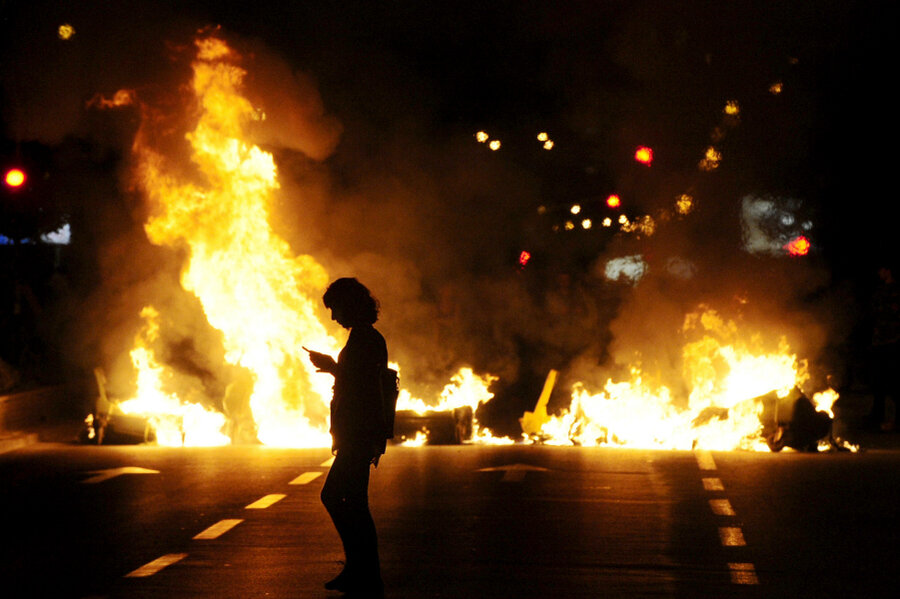Civilians with smartphones combat war crimes – with an app
Loading...
| LONDON,
A new mobile phone app enabling civilians in conflict-torn countries to capture and share verifiable footage of war crimes will help authorities to prosecute the perpetrators, a leading legal body said as it launched the app June 8.
Mobile phone footage of human rights abuses, mainly shared on social media in recent years, is often fake, impossible to verify, or lacking the information necessary to be used as evidence in court, said the International Bar Association (IBA).
The "EyeWitness to Atrocities" app records the user's location, date, and time, and nearby Wi-Fi networks to verify that the footage has not been edited or manipulated, before sending it to a database monitored by a team of legal experts.
"This could be a real game-changer in the fight for human rights and international justice ... and provide a solution to the evidentiary challenges surrounding mobile phone footage," said IBA executive director Mark Ellis.
"It will also allow media outlets to use the footage and remove any doubts regarding authenticity that may have previously prevented them from showing mobile phone videos," Ellis told the Thomson Reuters Foundation by phone.
The app was devised following controversy surrounding mobile footage aired by British broadcaster Channel 4 in 2011 which purported to show Sri Lankan troops executing Tamil prisoners.
Sri Lanka's government initially dismissed the footage as fabricated, then broadcast its own version of the video, and said the killers were rebels in army uniform. Channel 4 rejected the claim, saying its work had been meticulously checked.
Millions of YouTube viewers were fooled in November last year by the video of the "Syrian hero boy" who appeared to brave gunfire to rescue a young girl hiding under a car.
The video was in fact produced in Malta by Norwegian filmmakers who used actors and presented the footage as real in order to highlight the plight of children in conflict zones.
"Until now, it has been extremely difficult to verify the authenticity of these images and to protect the safety of those brave enough to record them," Ellis said.
The app, which was designed based on the rules of evidence in international, regional, and national courts, allows the user to decide whether or not to be anonymous when uploading footage.
Once a video is submitted, it is stored in a virtual evidence locker, where it can only be accessed by legal experts who analyze the footage and identify the appropriate authorities to pursue criminal charges, according to the IBA.
The IBA, an international organization of lawyers and law firms, said it was working with rights groups to ensure the app would be used in some of the world's most severe conflict zones, including Syria, Iraq, and Ukraine.
• This article originally appeared at Thomson Reuters Foundation, a source of news, information, and connections for action. It provides programs that trigger change, empower people, and offer concrete solutions.





